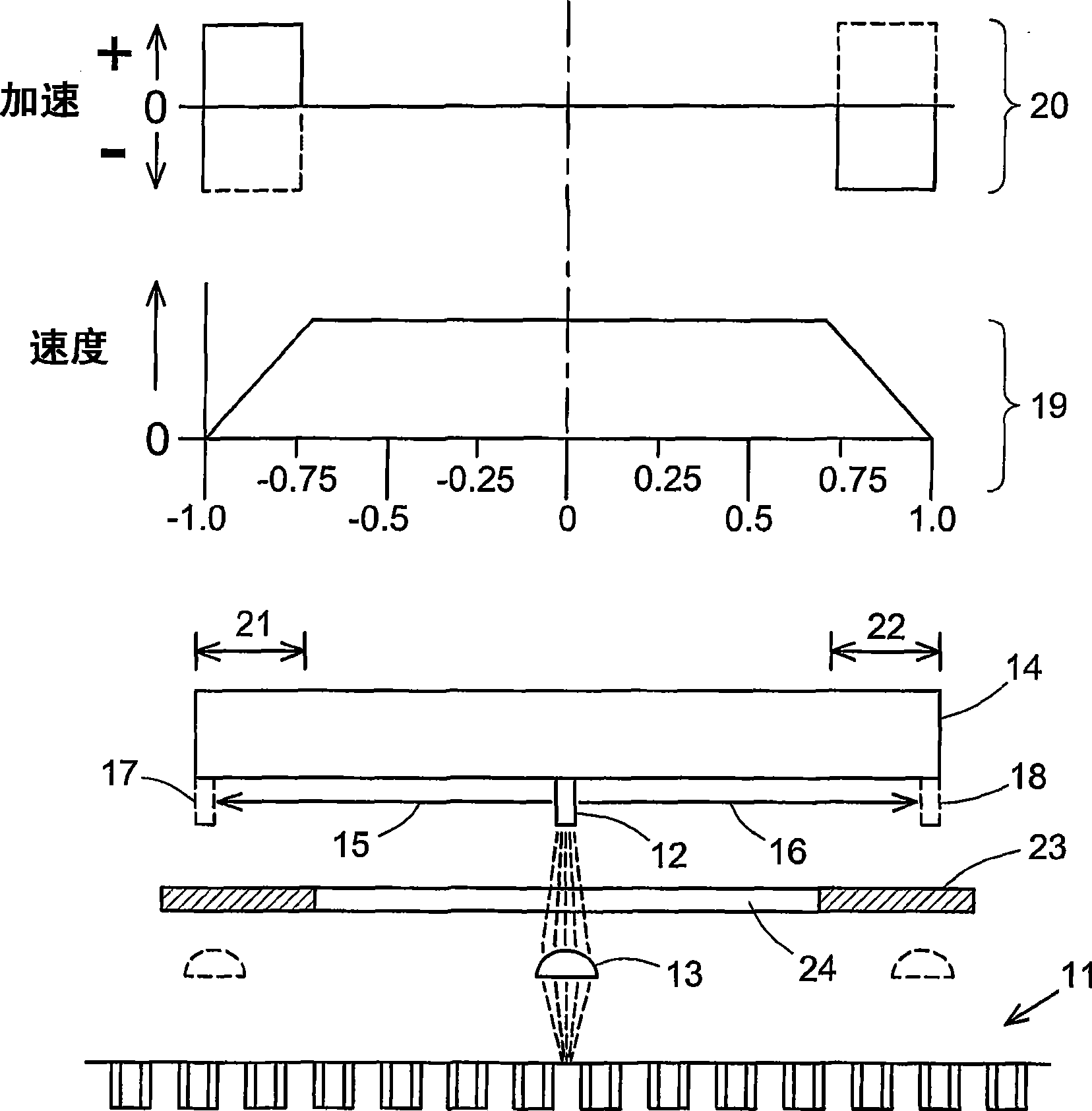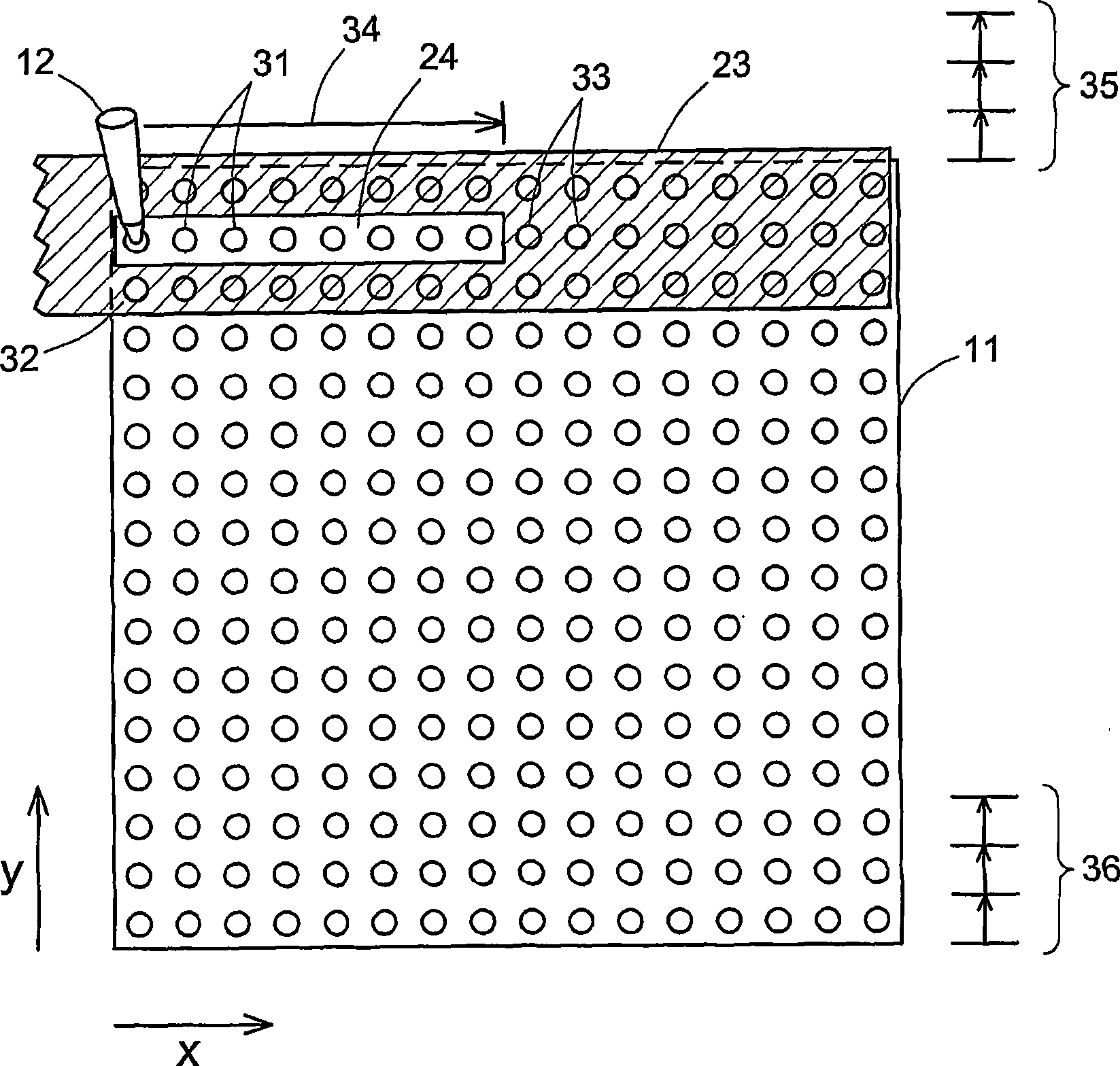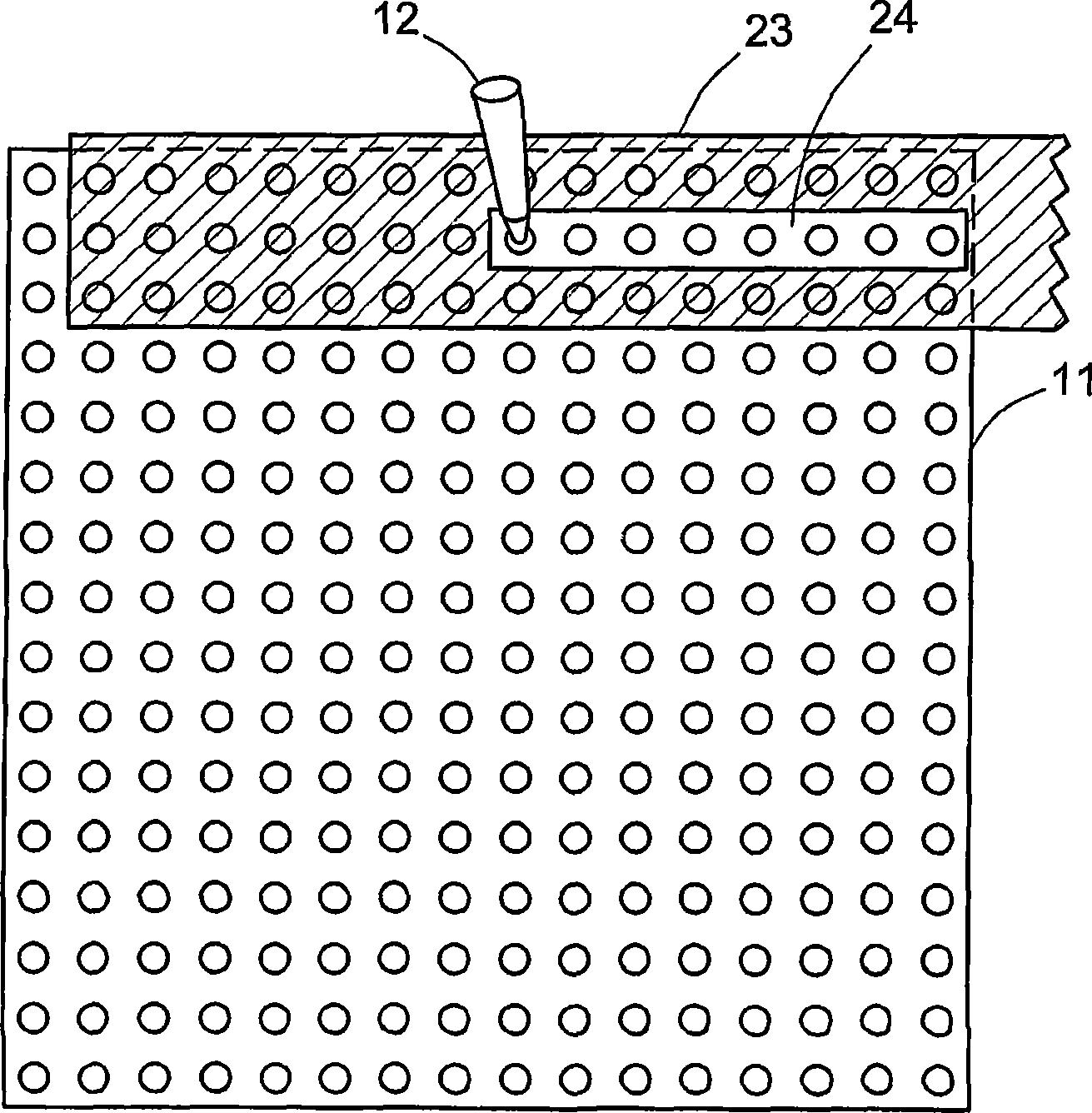Masking to prevent overexposure and light spillage in microarray scanning
A microarray and mask technology, applied in the field of scanning systems, can solve the problems of undesired exposure, leakage, light leakage, etc.
- Summary
- Abstract
- Description
- Claims
- Application Information
AI Technical Summary
Problems solved by technology
Method used
Image
Examples
Embodiment Construction
[0009] In this paper, the order of the positions of the microarray illuminated by the light source in the scanning process is called the scanning protocol, and the length of each process of the scanning head is determined in the round-trip process (the length from the scanning head to the light source is fixed ), for example, the back-to-front movement of the scan head, which also incorporates the microarray incremental movement that enables the scan head to align with the next row of sample positions on the microarray and the scan head, mask, and complete microarray scan All other movements of the microarray are required. While individual protocols can vary depending on the structure and dimensions of the microarray, all protocols involve the reciprocation of the scan head along the x-axis to each row of the microarray. Absolute uniformity cannot be achieved while uniform scan head speed provides the most uniform distribution of illumination between sample positions along the...
PUM
 Login to View More
Login to View More Abstract
Description
Claims
Application Information
 Login to View More
Login to View More - R&D
- Intellectual Property
- Life Sciences
- Materials
- Tech Scout
- Unparalleled Data Quality
- Higher Quality Content
- 60% Fewer Hallucinations
Browse by: Latest US Patents, China's latest patents, Technical Efficacy Thesaurus, Application Domain, Technology Topic, Popular Technical Reports.
© 2025 PatSnap. All rights reserved.Legal|Privacy policy|Modern Slavery Act Transparency Statement|Sitemap|About US| Contact US: help@patsnap.com



